Blepharoplasty, often referred to as eyelid surgery or an eyelid lift, is a highly effective surgical procedure designed to enhance both the appearance and function of the eyelids. Eye lift surgery, another term for blepharoplasty, aims to address sagging, wrinkles, and other age-related changes around the eyes to create a more youthful look. This form of cosmetic eyelid surgery can be performed on the upper eyelids, lower eyelids, or both, depending on your individual needs and concerns. Whether you are troubled by excess skin, drooping skin, droopy eyelids, or persistent eye bags, blepharoplasty surgery offers a tailored solution to rejuvenate the eye area. By removing or repositioning excess skin and fat, our GMC Specialist Registered plastic surgeon can help restore a more youthful, refreshed look, significantly improving your facial aesthetics. The result is a brighter, more alert appearance that can boost your confidence and overall sense of well-being.
Eyelid surgeries encompass both upper and lower eyelid procedures, addressing a range of cosmetic and functional concerns. These surgeries are commonly performed to improve the appearance of the eyelids or to correct issues that may affect vision.
A blepharoplasty upper eyelid lift is a common surgical option for correcting hooded or drooping upper eyelids, effectively improving both appearance and, in some cases, vision.
Kensington Medical specialises in blepharoplasty eyelid surgery and eye bags removal surgery. If you feel you have sagging or hooded eyelids or under eyebags, we can help. Read on to find out about the best eyelid and eye bags removal plastic surgeons in the UK, the most frequently asked questions and what to expect before the procedure, on the day of the procedure and our special aftercare.
Kensington Medical also offers aesthetic eyelid surgery for patients seeking both cosmetic and functional improvements, helping to rejuvenate the eye area and address concerns such as drooping, puffiness, or lower eyelid bags.
People can feel self-conscious about their eyelids and some feel it gives them a tired look. A blepharoplasty helps refresh the upper lids, lower lids, and lower eye lids or under eye bags, leaving patients with a more youthful, rested look. Blepharoplasty surgery is often performed in conjunction with other surgery such as facelift.
Cosmetic eyelid surgery plays a crucial role in removing excess skin from the eyelids to enhance the appearance of tired eyes. Skin removal is a key part of the surgical approach for both upper and lower eyelids, especially when addressing lower eyelid bags and skin laxity.
UK based Expert GMC Specialist Register facial plastic surgeons and experienced blepharoplasty specialists
See our blepharoplasty eyelid surgery videos to find out more
Each aesthetic surgery is tailored to the individual needs of the patient, ensuring the best possible outcome and satisfaction.
Blepharoplasty surgery, also known as eyelid surgery or an eyelid lift, is a cosmetic procedure often performed to address both aesthetic and functional concerns. This cosmetic surgical procedure, also referred to as eyelid lift surgery or eyelid reduction, is designed to enhance the appearance of the eyelids. Upper blepharoplasty is usually performed under local anesthesia, making it a convenient option for many patients.
The natural ageing process leads to changes in the eyelids, such as sagging, puffiness, and excess tissue, which can be effectively addressed with eyelid lift surgery or eyelid reduction. This surgical procedure involves the removal of excess skin, muscle, and fat from the upper and/or lower eyelids, resulting in a more youthful and refreshed look. The upper eyelid blepharoplasty procedure specifically involves careful preoperative markings, followed by the precise removal or repositioning of excess skin, muscle, and fat to improve the appearance of the upper eyelids, while minimising visible scarring and promoting natural healing. Blepharoplasty treatment is an effective approach for correcting drooping eyelids and excess eyelid tissue. As we age, our eyelids can become droopy, and excess skin can accumulate, leading to a tired or aged appearance. What does blepharoplasty surgery do? It tightens and smooths the skin around the eyes, reducing signs of ageing such as droopy eyelids, eye bags, and excess skin. Whether performed on the upper eyelids, lower eyelids, or both, this procedure is popular among individuals seeking to rejuvenate their appearance. Blepharoplasty can also be used to address complex eyelid conditions such as thyroid eye disease, helping to restore natural eye appearance and function.
Blepharoplasty surgery offers a range of benefits that go beyond mere aesthetics.
It significantly improves the appearance of the eyes by reducing fine lines, wrinkles, and sagging skin, giving the face a more youthful and rejuvenated look. Blepharoplasty procedures are known for their long-lasting results and are considered a full surgical procedure, providing comprehensive eyelid rejuvenation by addressing excess tissue, skin, and fat. This enhancement often leads to increased self-confidence and self-esteem, as patients feel more comfortable and satisfied with their appearance.
Secondly, blepharoplasty surgery can provide functional benefits; for instance, removing excess skin that obstructs the field of vision can improve eyesight. The results of blepharoplasty surgery are long-lasting, making it a worthwhile investment for those seeking enduring improvements in their appearance.
For even more balanced and natural-looking results, fat transfer can be combined with blepharoplasty to restore lost volume and enhance facial contouring.
A blepharoplasty procedure can deliver remarkable improvements to the upper and lower eyelids, addressing both cosmetic and functional concerns.
Upper eyelid surgery is particularly effective for correcting drooping skin that contributes to a hooded or tired appearance, as well as removing excess fat and lifting droopy eyelids that can make you look tired or older than you feel.
Lower eyelid surgery, targets under-eye bags, dark circles, and loose skin, helping to smooth and tighten the area beneath the eyes. By removing excess skin and fat, blepharoplasty surgery can not only enhance your youthful appearance. Whether your goal is to look more rested, reduce the signs of ageing, or address under eye bags, a blepharoplasty procedure can achieve natural-looking, long-lasting results, with modern techniques designed to minimise visible scarring.
Modern blepharoplasty techniques may also include fat repositioning to achieve smoother, more youthful contours in the eyelid area.
Blepharoplasty upper lid lift and eye bag removal Before & After Images
Blepharoplasty eyelid surgery results can be long lasting and most of our patients tell us they feel refreshed. Many find they start to enjoy using eye make up again and feel more confident.
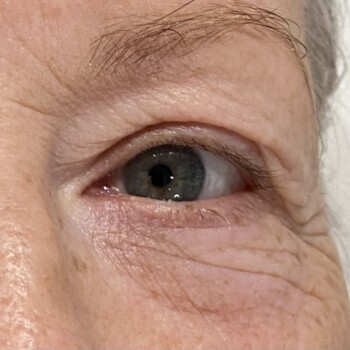
Before
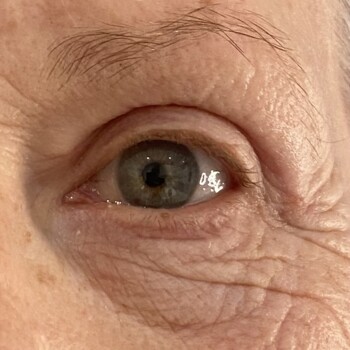
After
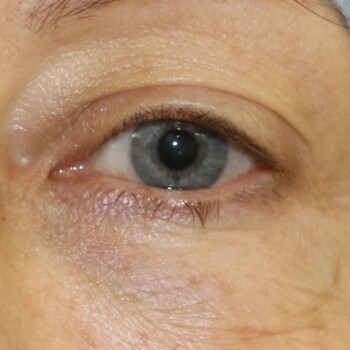
Before
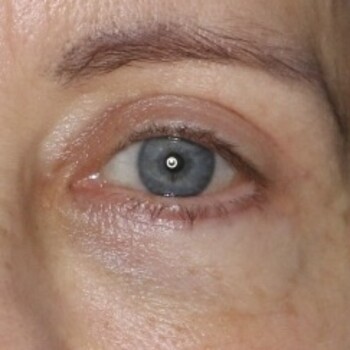
After

A blepharoplasty procedure of the upper eye lids and lower eye lids are a good choice for people who are unhappy with excess skin or fat that sags near the eyes, causing a tired look. The procedure can also reduce puffy bags under the eyes or remove them altogether.
The best candidates are healthy people who have a realistic understanding of what this surgery can achieve. Like most surgical procedures patients are advised to stop smoking before the treatment. Blepharoplasty patients tend to be aged in their 40s, 50s, 60s and 70s years of age. However some people experience droopy eyelids or eyelid ptosis which can also be present from birth. This is called congenital ptosis and as a result people in their 20s or 30s may choose to have an upper blepharoplasty to treat the droop.
Our experienced team of Kensington Medical facial plastic surgeons based in Harley street, London and Wimbledon, offer customised care and an individual approach to ensure you get the best results from your blepharoplasty procedure. Choosing qualified professionals for facial plastic surgery is crucial to achieving the desired cosmetic improvements and ensuring patient safety.
Our experienced team of Kensington Medical facial plastic surgeons based in Harley street, London and Wimbledon, offer customised care and an individual approach to ensure you get the best results from your blepharoplasty procedure.
Preoperative Consultations
The initial consultation is a key step where you and your surgeon discuss your goals, medical history, and treatment options to ensure the procedure is tailored to your individual needs.
Your journey starts with a conversation between you and your surgeon: the pre-operative consultation, which is crucial to the operation's success. Patients interested in surgery with Kensington Medical have multiple consultations with the surgeon. This is because we want our patients to be completely informed before they decide whether to proceed with surgery. In most cases, our patients have two pre-operative consultations.
The first preoperative consultation is generally face-to-face. Its purpose is:
After the first consultation, the surgeon will write to you summarising your discussion with them. We will issue you with a quotation based on the treatment plan that you have discussed at the consultation. We will also send you extensive information about the procedure you are considering, including the risks it involves and the steps you should take pre-operatively and post-operatively in order to get the best possible outcome from your surgery.
A second pre-operative appointment is frequently required. This is because:
The second consultation takes place by video call or in person.
Preoperative Care
Once you've decided to proceed with surgery, we will schedule your procedure at one of our specialist cosmetic surgery hospitals.
If you undergo an upper and lower blepharoplasty, or a lower blepharoplasty, your procedure is likely to be carried out under general anaesthesia. You will be asked to fill out a health questionnaire ahead of surgery. Your anaesthetist will evaluate this and may call you to go over aspects of your medical history. You may need to visit the hospital for blood tests. One of our medical staff members will go through this with you before your planned appointment. An Upper Blepharoplasty is generally carried out under local anaesthesia, in which case no anaesthetist will be involved.
We will also issue you with preoperative instructions. In particular:
On The Day Of The Procedure
If your surgery is under general anaesthesia, you will be asked to arrive at the hospital at least an hour before your operation. The hospital's nursing staff will check your blood pressure, temperature and pulse. You will then meet your anaesthetist for a final check and your surgeon for a mark-up. For a local anaesthesia procedure, you will arrive around 30 minutes before the scheduled time and meet only the surgeon and nursing staff.
For an upper blepharoplasty, or upper lid surgery, the surgeon makes a cut following the eyelid fold, then trims away unwanted skin, muscle and fat to finally stitch up the wound. The operation generally lasts 45 to 60 minutes.
For a lower blepharoplasty (also known as lower lid surgery or eye bag removal), the surgeon cuts inside the lower lid or in the natural crease on the lower lid, below the lashes. The surgeon trims or repositions unwanted muscle, fat and loose skin. The wound is then stitched up. The operation lasts 60 to 75 minutes.
When both sets of eye lids are involved (upper and lower blepharoplasty), the operation lasts 75 to 90
minutes.
Following an operation under general anaesthesia, you will be transferred to the hospital’s recovery room. There, the nursing team will look after you and monitor you. Depending on the surgery and your reaction to it, you should spend two to four hours in the recovery room. If the operation is under local anaesthesia, the recovery period is quicker and sometimes takes place in the operating theatre. You will leave the hospital with a friend or a family member after the nursing staff is confident that you are in a fit condition to return home. You should make plans for someone to spend the first night after surgery with you. Although post-operative discomfort is typically not severe, you will be given painkillers just in case.
Postoperative Care
The quality of the postoperative care following a blepharoplasty is crucial to ensure a good outcome to the surgery.
Our nursing staff will be on call around the clock after you leave the hospital to make sure your recovery is comfortable and to answer any questions you may have.
In the weeks following your operation, your surgeon and / or our nursing team will see you in
consultation several times to assist you and check on the facial skin and scars:
Following a blepharoplasty, bruising and swelling may persist for one month to six weeks.
Postoperative Instructions
You will be given aftercare recommendations by our medical staff specific to the operation you have undergone and taking into account your medical profile. The advice will cover a number of subjects, including: when it is safe for you to resume your daily activities, exercise, make-up, travelling, looking after your dressing; washing, diet, etc. It is crucial that you follow these directions carefully in order to reduce the likelihood of postoperative complications.
The sun can cause scarring, discolouration, and other undesirable side effects. It is therefore essential that you protect your face by wearing a hat (or using an umbrella) and applying sunscreen when going outside.
Regarding exercise, sport, strenuous movements or activities involving much facial movement, please wait until our medical team at Kensington Medical has given you the all-clear.
A healthy lifestyle that includes enough rest, a balanced diet and plenty of hydration is also a key contributing factor to ensure a good recovery and surgical outcome. This being the case, it is advisable not to smoke or consume alcohol before the operation and throughout the healing process.
Blepharoplasty Downtime and Recovery
The time it takes to get back to a normal daily routine and work after a blepharoplasty varies from one patient to the next. Several factors are at play: the actual speed of the recovery and each patient’s perception of how they look.
In the first 7 to 10 days post surgery, there can be some swelling and bruising. In addition, the scars will be more visible until the stitches come out. Some patients are happy to return to work or to their normal routine during that phase, while others prefer to take time off.
Generally, in the second week post surgery, patients are able to put concealer on their lids and most of them are happy to return to work or to their daily routine. After three or four weeks, the healing will be advanced, the swelling and bruising should have gone and you will start to look very good indeed.
You should enjoy the full results from your surgery six to seven weeks after surgery.
Recovery After Blepharoplasty
Recovery after blepharoplasty surgery typically spans several weeks, during which patients may experience swelling, bruising, and some discomfort around the eyes. To minimise these side effects and promote healing, patients are advised to apply cold compresses to reduce swelling and bruising, use lubricating drops or ointment to keep the eyes moist and comfortable, and avoid strenuous activities such as heavy lifting or bending. Maintaining a healthy diet and staying hydrated are also crucial for a smooth recovery. Most patients can return to their normal activities within 1-2 weeks after surgery, although it may take several months for the full effects of the procedure to become visible.
Risks and Complications of Blepharoplasty
As with any surgical procedure, blepharoplasty surgery carries certain risks and potential complications. These can include swelling and bruising around the eyes, infection or bleeding, dry eyes, or irritation, scarring or asymmetry, and vision problems such as double vision or blurred vision. There is also the risk of an adverse reaction to anaesthesia. To minimise these risks, it is essential to choose a qualified and experienced surgeon with a proven track record in performing blepharoplasty surgery. Patients should follow their surgeon’s instructions carefully and attend all follow-up appointments to ensure a smooth and successful recovery.

Mr David Gateley
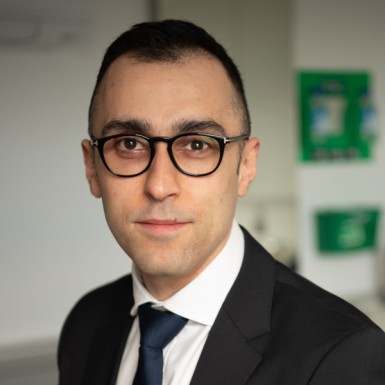
Mr Amir Sadri
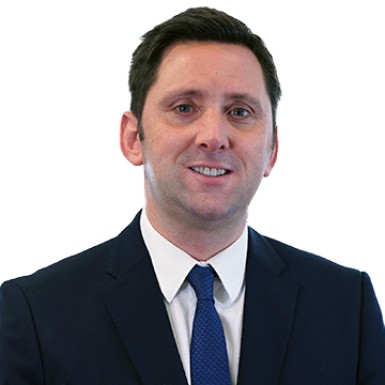
Mr Paul Tulley

Mr Naveen Cavale
What are the risks associated with a upper eyelid blepharoplasty and lower lid blepharoplasty?
As with any eyelid surgery, blepharoplasty eyelid lift and lower eye bag removal offers a variety of potential risks. They include excess bleeding, infection, swelling, and problems with your vision or eye movement. Most side effects resolve as your body heals.
What are the recovery time and downtime from a blepharoplasty?
Blepharoplasty is a same day procedure. We advise that you have someone to drive you home and stay with you for the night.
A first follow-up visit will be booked around one week after the eyelid surgery. In this visit the sutures will be removed, following which any redness around the surgical wounds will dissipate quickly.
In the case of an upper eyelid surgery (upper blepharoplasty), you will be able to use concealant in the second week following the surgery. And from the third or fourth week, you will start to look very good indeed.
For a lower eyelid surgery (lower blepharoplasty), the recovery is slower as it is a more involved procedure, with more extensive surgery. So you will take slightly lon to settle down, usually four weeks. You can use eye makeup from the second or third week.
We recommend the use of silicon products and sunblock on the scars to protect them against UV light.
Regarding the downtime following surgery, every patient is different: some are happy to go back to work with residual swelling; others prefer to wait until swelling has fully subsided. Generally, as the swelling decreases and patients are able to use eye makeup, they resume work within two weeks.
What scarring can be expected from a blepharoplasty?
After your upper eye lift surgery, you will have a small scar located in the crease of your eyelid. It is not noticeable and most small scars will fade over time.
For a lower eyelid surgery, the incision is generally made inside your lower eyelid so the scar is not visible.
Your facial plastic surgeon will go over the details of scarring in your pre-surgical appointment.
View all blepharoplasty videos
How soon will I see results / are they permanent?
This procedure can be highly effective in reducing the appearance of wrinkles around your eyes. Many people may see changes immediately after the swelling and bruising subsides, although it can take a few months for the full results to show.
In most cases, these effects will last for years. However, your skin will lose its elasticity over time through the natural ageing process.
How much does a blepharoplasty cost in London?
At Kensington Medical, our blepharoplasty with our expert GMC specialist registered plastic surgeons cost from £3,350 for an upper eye lid lift, or eye lift surgery.
The price for eye bag removal costs from £4,250.
A combination upper and lower blepharoplasty (upper eyelid lift and lower eye bag removal) costs from £5,800.
The combination price is more economical because both procedures are carried out in hospital on the same day. It is a day case procedure.
If you are interested in finding out if you are suitable for a hooded eyelift or a eye bag removal at our Harley street London clinic, please get in touch. At your consultation, our expert facial plastic surgeon will discuss suitability, timelines and recovery times. You will see blepharoplasty before and after photos and will leave having a good understanding of how long you will need to looking refreshed again.
To find out more about our eyelid surgeons click here.
To find out about our 5 star hospitals click here.
To find out about Kensington Medical and why we only specialise in facial plastic surgery click here.
How should I prepare for a blepharoplasty?
The next step to a refreshed you is a consultation with our expert plastic surgeons. At your appointment, they will discuss the details of the blepharoplasty procedure and answer any questions that you may have about blepharoplasty.
To prepare for your consultation we would ask you to consider:
When will I see before and after images of a blepharoplasty?
During your consultation, your surgeon will share before and after images of previous eyelid and eye bag removal surgeries that they have performed so that you can see the types of results you should expect.
View all blepharoplasty videos
The Kensington Medical team provides a smooth and exciting journey to your blepharoplasty. A consultation with one of our facial surgeons is where you'll discuss the details, what you want to achieve and perhaps any other procedures that might be of interest.
Your face is everything, and we’ll ensure that the procedure gives you the confidence and refreshed look you are after. Find out more by filling in the contact form or call us.
For further information about under eye bag removal and what type of surgery your surgeon may recommend click here.
For information on bags below the eye and on the cheek area called malar bags or festoons click here.
To book a consultation in Harley street, London or Wimbledon UK, please fill in your details.

Medically reviewed by Mr David Gateley MA, FRCS, FRCS (Plast), GMC number 2939470 - last update on 18 November, 2025.